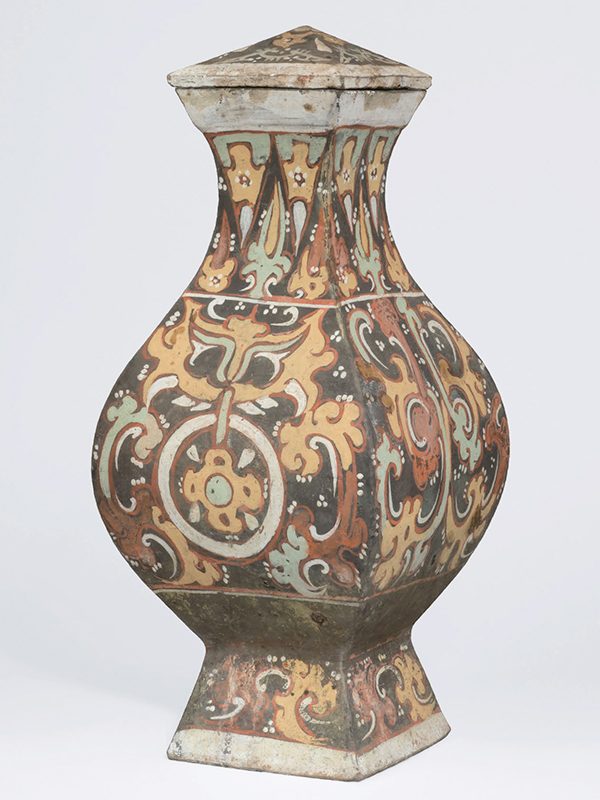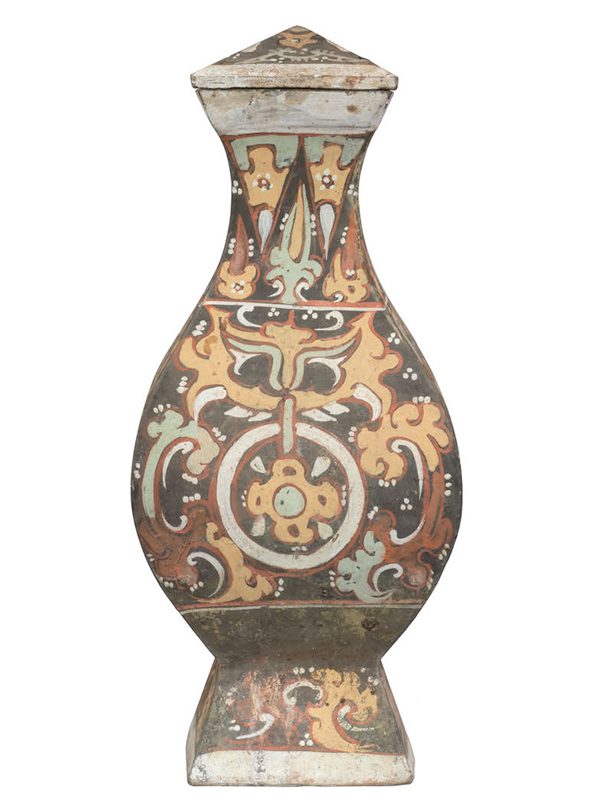Painted pottery square jar with cover, fanghu
Western Han dynasty, 206 BC - 8 AD
A large painted pottery vessel of baluster shape and square section, supported on a tall, tapered foot and flaring outwards at the neck. The body is divided into three sections by two horizontal Iines. Two large taotie masks with ring handles painted in yellow and white with foliage adorn the sides. The neck is decorated with a triangular motif, whilst the tall foot has curled pattern. The domed lid has a pointed top and geometric patterns. The vessel is painted in yellow, red, white and apple green colours against the dark-greyish pottery body.
The taotie is a motif often found on Chinese ritual bronze vessels during the Shang and Zhou dynasties. This lidded fanghu square jar was used to store grains or alcohol and was modelled after a bronze or lacquer prototype, such as a Western Han bronze example with gold and silver in the collection of the Metropolitan Museum of Art.1 The dark colour of the vessel’s body indicates a northern origin, such as Henan or Shaanxi provinces. A closely comparable painted vase with cover, similarly decorated with taotie-mask handles in yellow and slightly larger in size, was exhibited in the Tokyo National Museum in 1994.2
- Milleker, E. J. and Aruz, J. ed. The Year One: Art of Ancient World East and West, The Metropolitan Museum of Art, New York, 2000, p. 161, pg. 113
- Chagoku no toji: tokubetsu ten, Tokyo Kokuritsu Hokubutsukan, Tokyo, 1994, p. 26, no. 30


